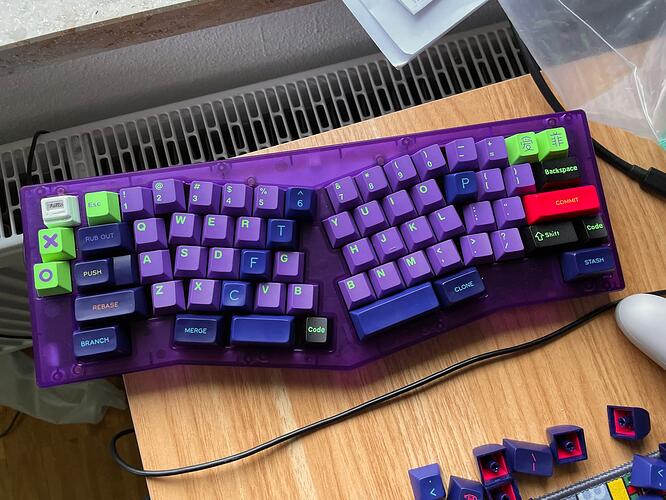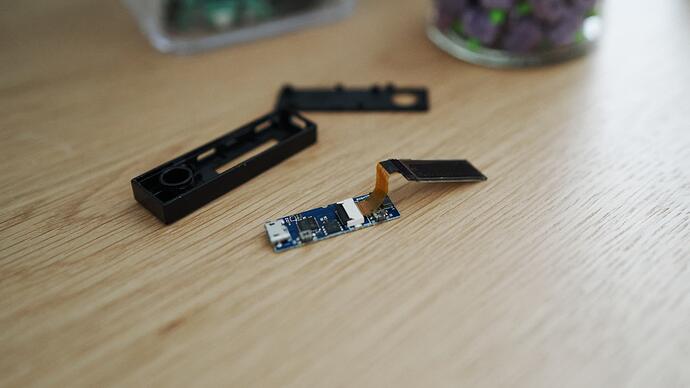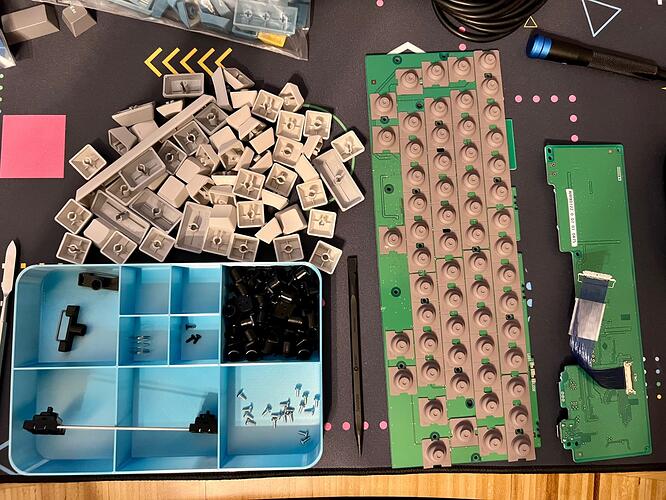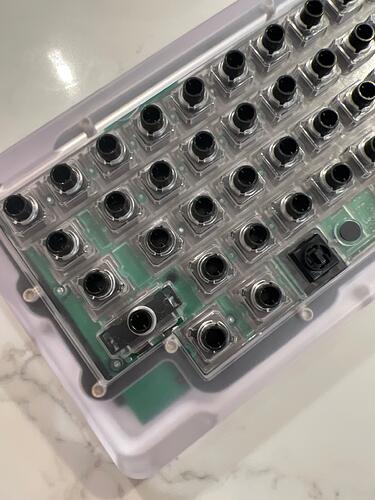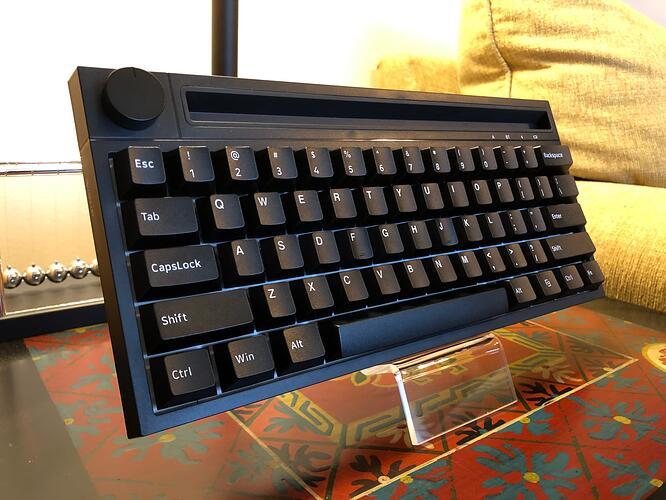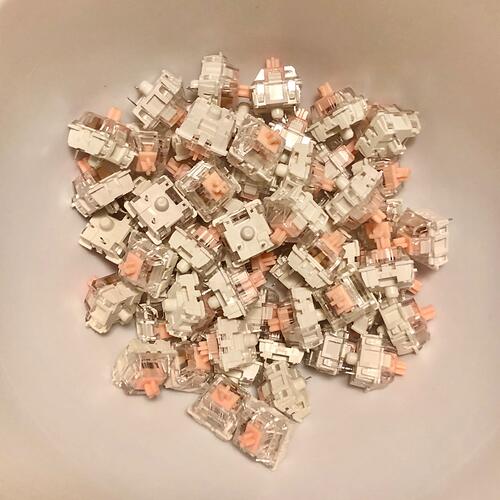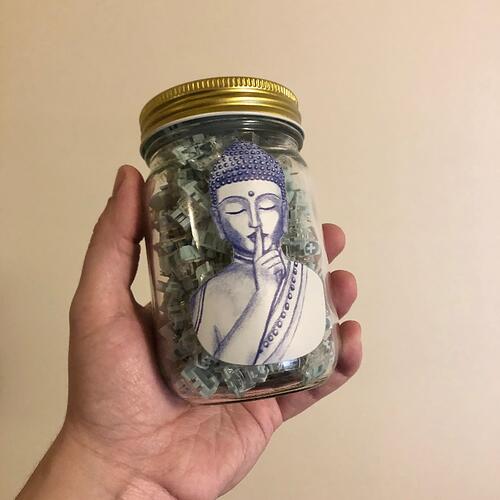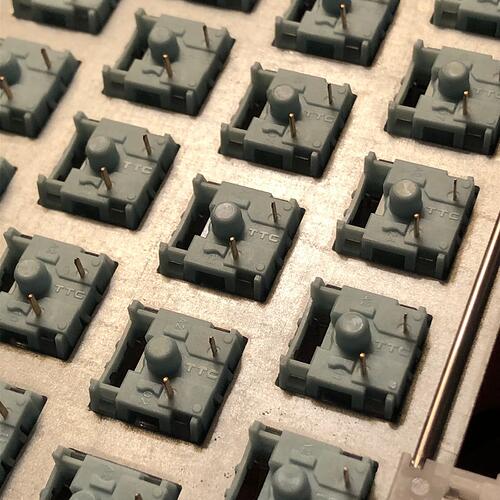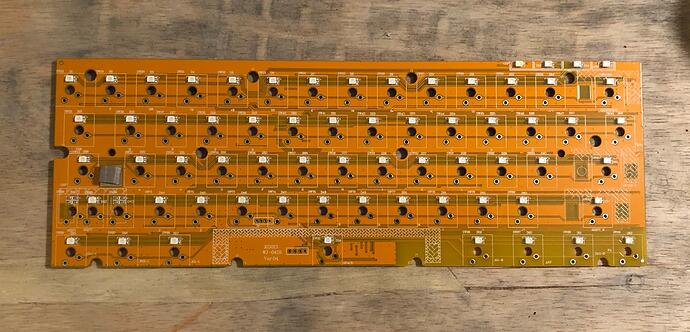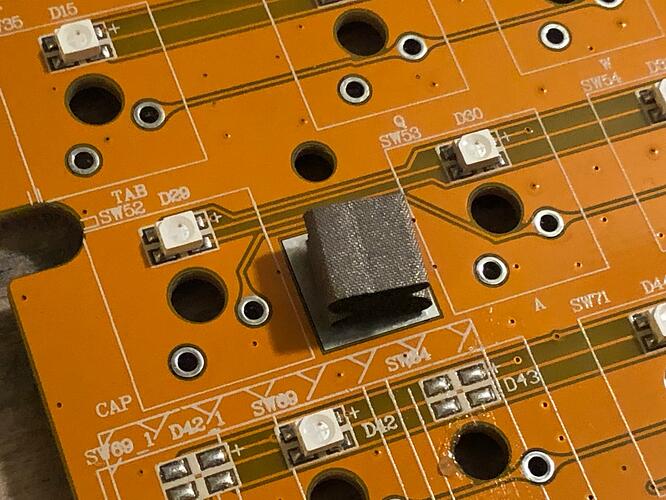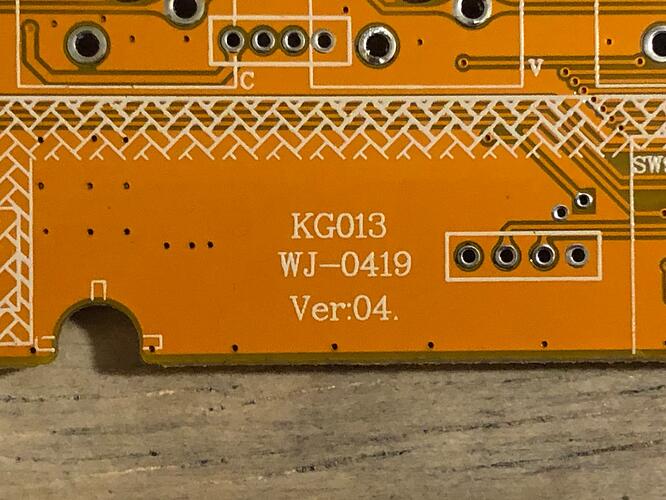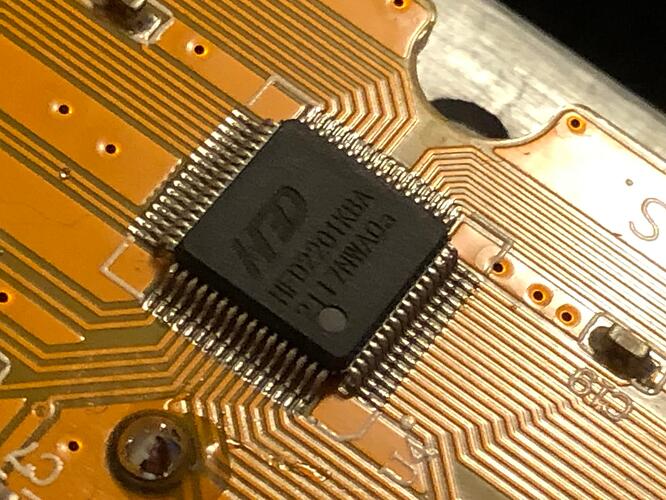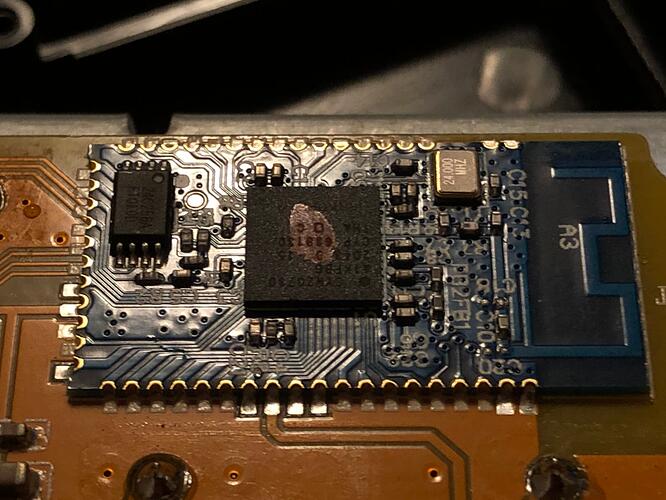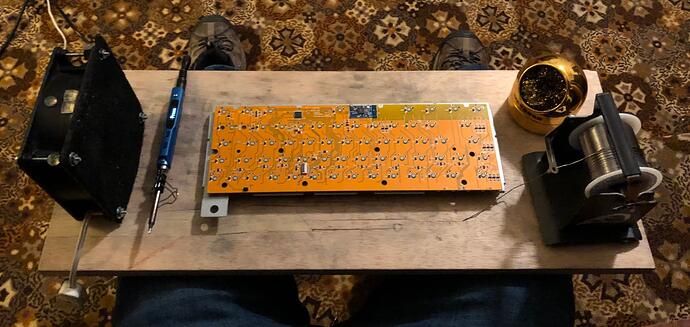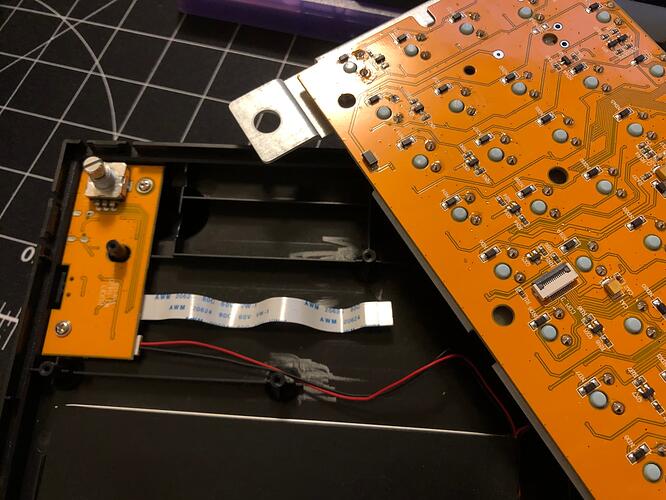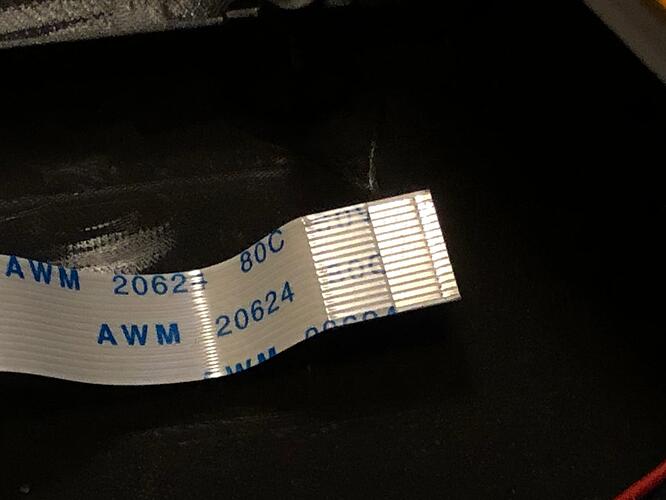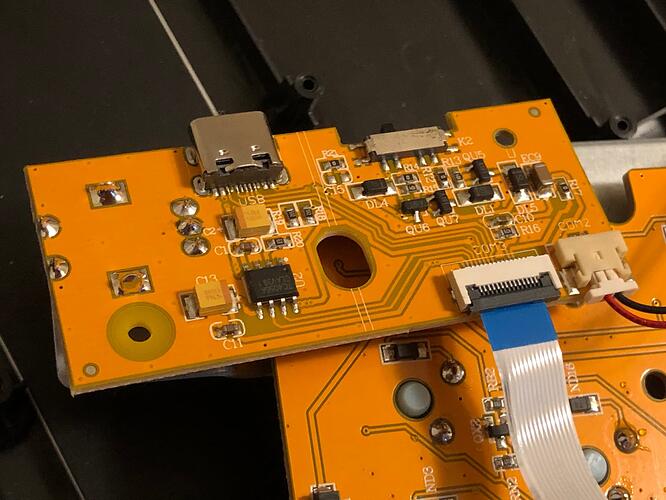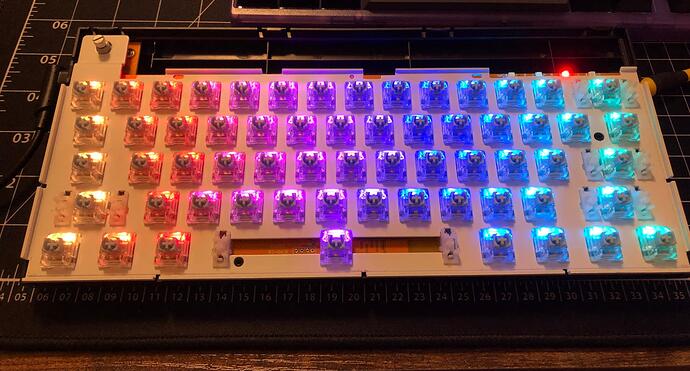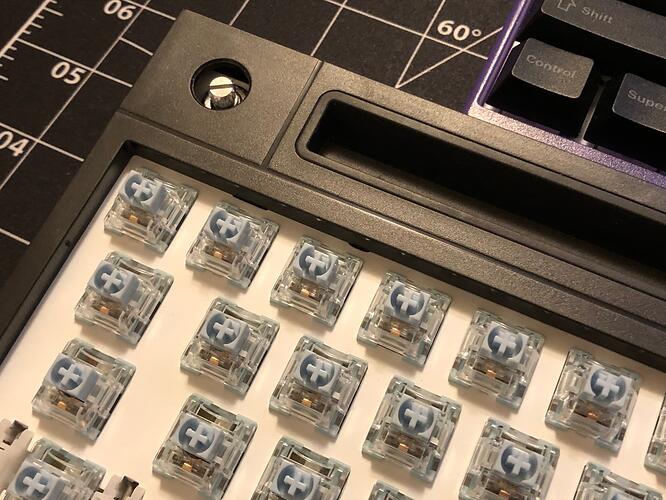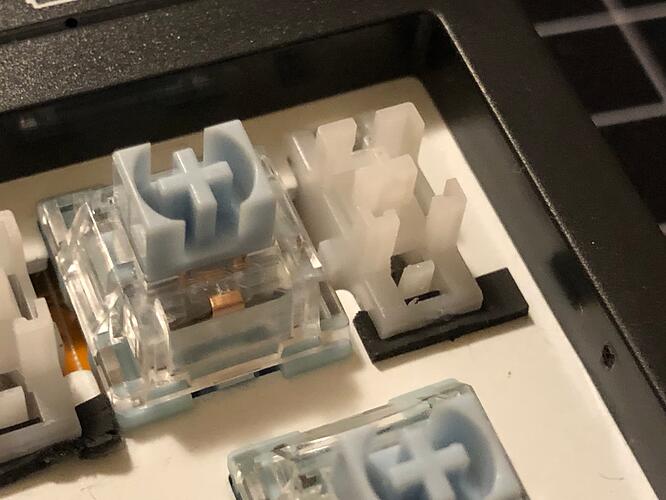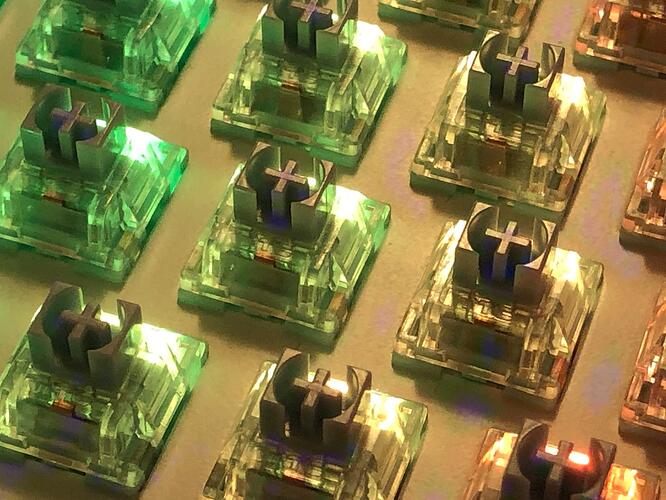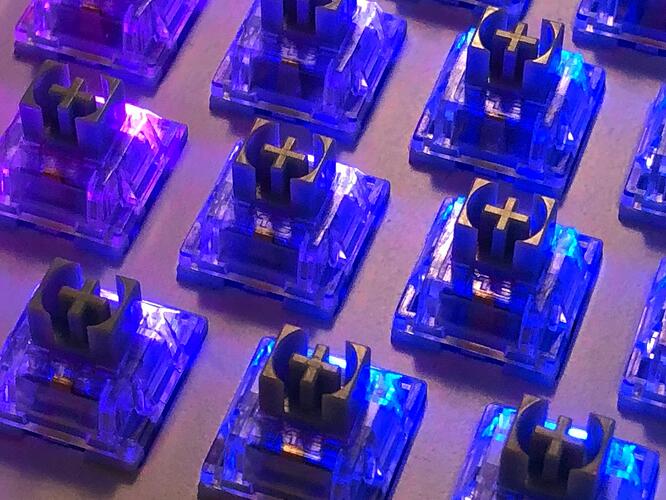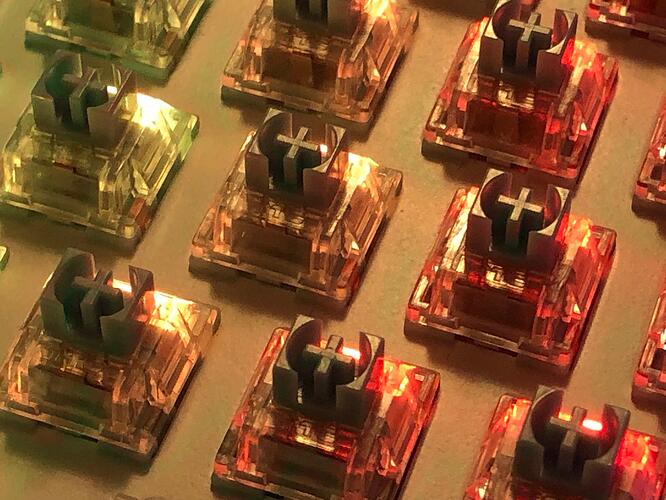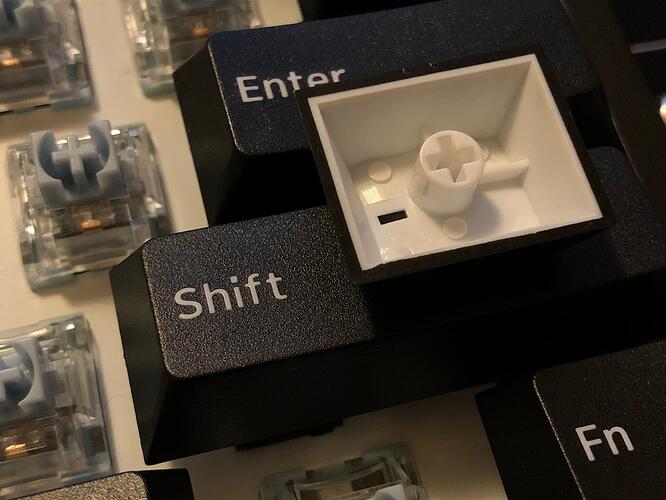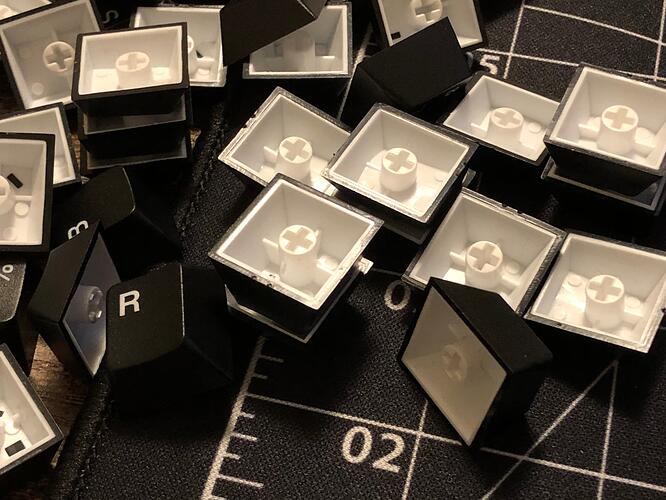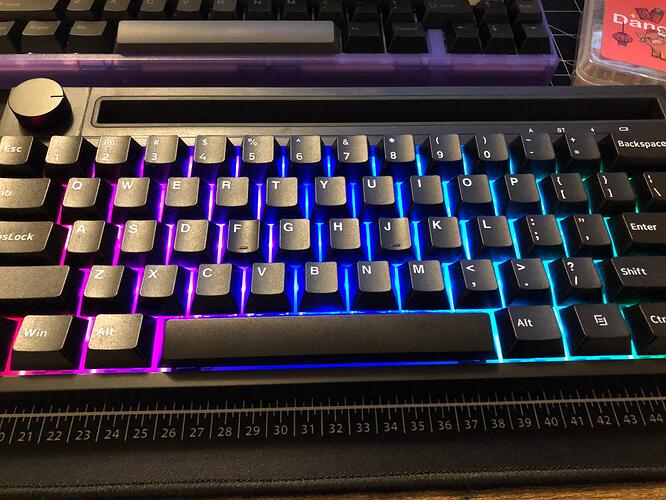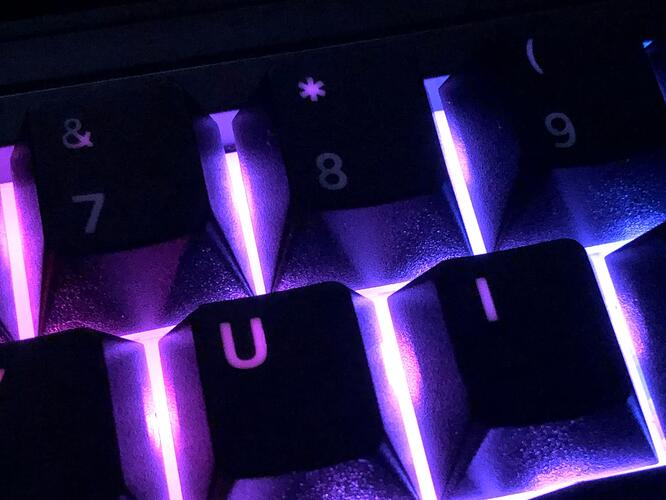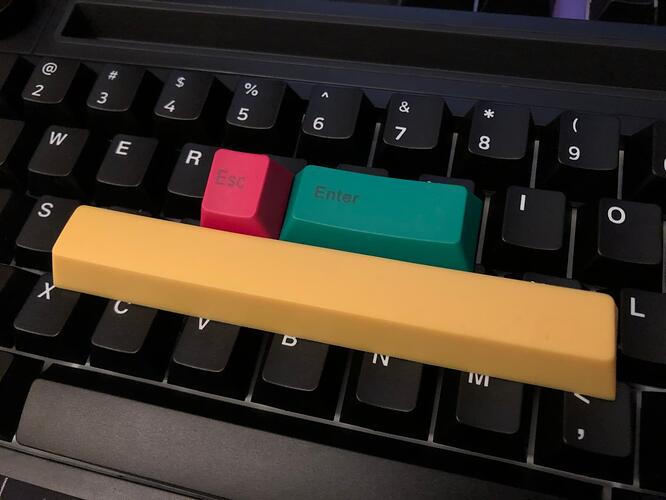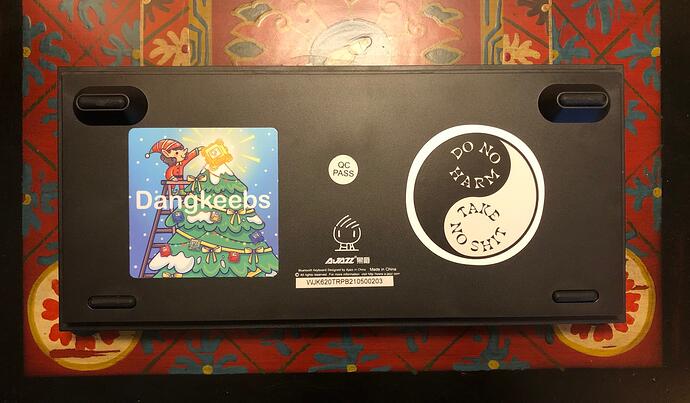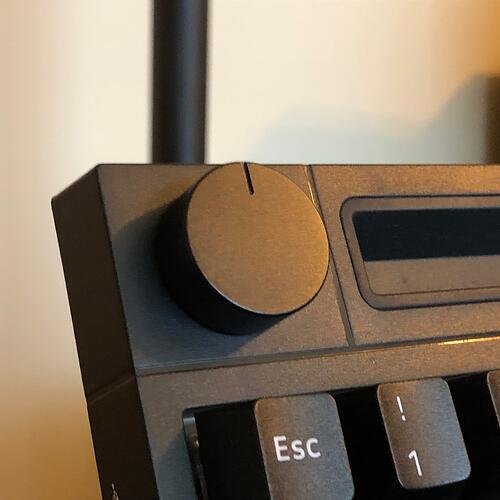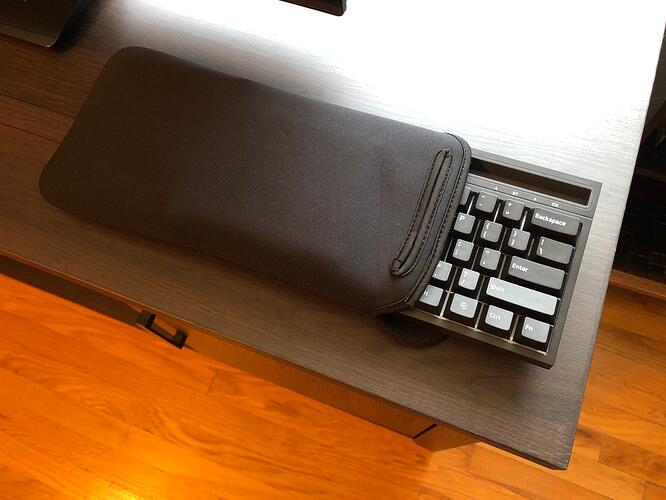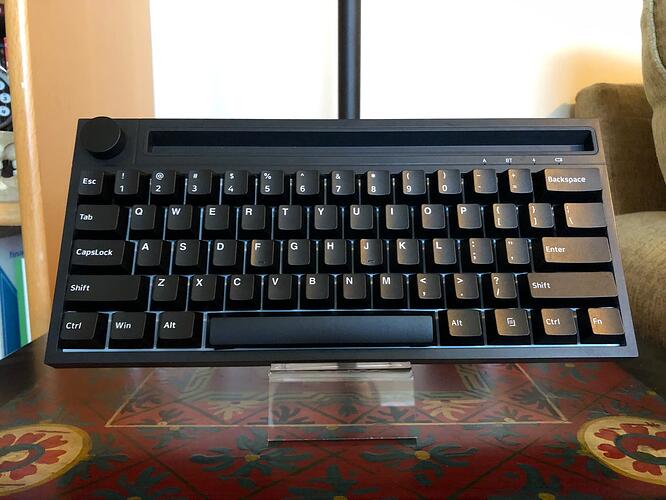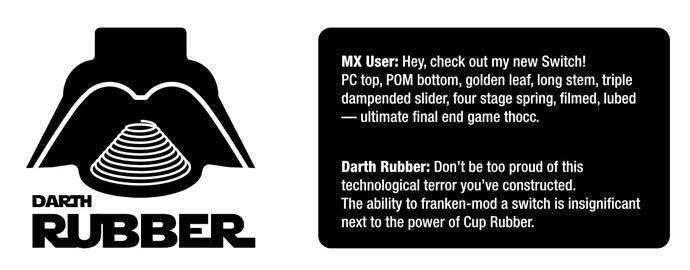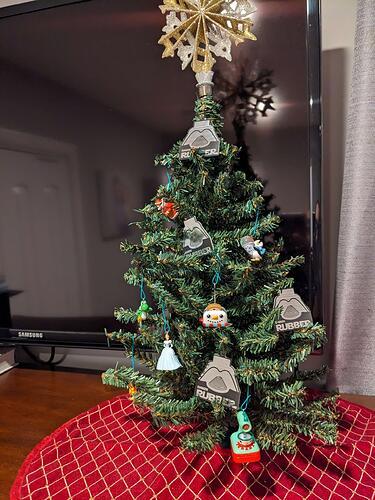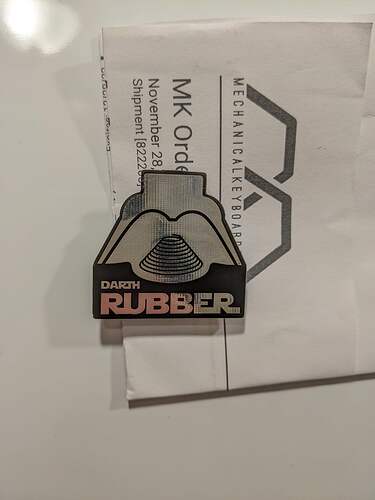interesting, how’s the compatibility with different keycaps?
All good there. The NicePBT, PBTfans (PBT/ABS), GMK, and ePBT spacebars I tested with all had a reasonable bit of grip, you know without feeling like your keycap stems were in jeopardy. The worst I’ve experienced was IFK paired up with C³ Equalz v3. Never again. I’m convinced those two companies hate each other. 
Which is funny because TKC sells both.
the finish on this board reminds me of the leica/aperture texture from norbauer boards. where did you have it coated?
Yeah I agree, though I’ve never seen the norbauer aperture finish in person, it definitely looks very similar.
My No. 2 TKL came directly from keycult like this. They offer this finish (or variants of it) from time to time. They call it “hammered blue”
That’s interesting about the Thinsulate insulation as a dampener. I’ve seen a lot of fiber used but it’s generally the loose poly fill variety. It sounds like you’ve made some big gains!
I had a similar experience with the Keebfront Doom Tactiles. My initial impression was very favorable, but I’ve found them to be very inconsistent in sound and feel to the point where there seem to be several different switches. I really want to like them and I think Keebfront has some solid ideas, but they still seem to be struggling a bit with follow through. I’m hoping they’re able to improve in future revisions.
Got my first SA Set finally on Friday after the package made some sketchy journeys and I never expected it to arrive here. But I’m not really satisfied with the sound of the board, whatever Switch I have here Test on them. I’m seriously thinking about making some Case/PCB Silicone with liquid stuff….
Woah, these look really nice. Thank you for sharing these, Dave.
When you say low-temp, is that just around 100º C?
Unfortunately I did not check with a thermometer. Added hot water from tap, stove was on about 30% power. Definitely less than boiling but enough to lightly steam.
I have a few broken des topre housings that are light gray that are next up. Not sure on the color on the color to try yet.
I poured a custom silicone case dampener for an aluminum GK64 last year and it was relatively easy and kind of fun. I had read that the trick to getting the best sound is to pour enough so that after it cures the lowest parts of the PCB (in my case, the hotswap sockets) press snugly into it. It was a huge improvement for my case. I followed this great tutorial on how to do this pour.
I have had a lot of fun doing this as well! I am glad you liked it. To me the hardest part is estimating how much liquid to pour in.
I have tried using water first to get an estimated volume, but water around my boards (even empty cases) makes me feel iffy. Get the water out accurately is a pain as well.
You could try using rice, and then compare volume.
I went with the extremely unscientific method of “ehhh maybe this will be enough?” and overshot how much of the mixture to make by about 20%.
I was too nervous to use the water method. I suppose if you use distilled water and let the case dry out completely it should be safe enough, but I was afraid I’d be adding moisture. Plus I was impatient and just wanted to start pouring silicone.
That’s a great idea! Would get you close enough and no worries about liquids.
Another modded commercial holiday gift board;
This one is an Ajazz K620T - a 60% with knob oriented towards tablets and phones. It has USBC connectivity as well as Bluetooth pairing with multiple devices. This one is for my mom, who loves her iPad and hates its on-screen keyboard.
Deets and photos:
This one shipped with Firstblood Pinks; I’d never heard of them at the time and still know next to nothing about them. They seem like perfectly cromulent linears - though they don’t all have stems from the same tooling, as a point of trivia. I didn’t think linears would be ideal for my mom, so I swapped them out for something else:
TTC Silent Bluish Whites - not really silent, but free from any harshness. I also chose them because I thought they’d be familiar to someone who has mostly used membrane dome and chicklet keyboards up to this point.
In the stamped plate, which I’m assuming is aluminum.
I used the Hako FR-301 for desoldering, so that was easy enough. BRRRRR… I may have had the heat a little too high after using it out in the cold one day, but all the pads had enough left for me to use. The PCB lifted right off the plate-and-switches first try, which is always satisfying.
A look at the PCB’s top-side. Seems plenty decent, and it’s got surface-mounted RGB diodes.
ESD protection connection pad; interfaces with the plate.
PCB designation and version no.
The brain
The Bluetooth module with integrated surface antenna
My lap-bench setup; for when I’m traveling - or when my normal workbench is too cluttered for the project I’ve been procrastinating. 
Soldering went smoothly, and small boards make for quick work. That’s a good ol’ TS-100 iron if you’re wondering; really cheap, really effective, powered by a laptop charger. There are better, newer versions and all kinds of riffs on this open-source thingo.
The fume extractor is a home-made one using a powerful fan from a piece of decommissioned medical equipment, a lamp cord, and a carbon filter.
Here you can see the daughter board which carries the USB port, battery connection, and rotary encoder. It connects to the main board with a thin ribbon cable. The plate features a tab that reinforces the encoder.
If you’re old enough, insert your own joke about how thick and unwieldy ribbon cables used to be
Re-connecting these was much easier with the daughter board removed from the case.
It’s alive!
Re-assembling the case; the top shell clips into place. The plate is held to the bottom case by two screws and a threaded collar on the encoder. See also the rubber-lined tray for holding mobile devices.
I used some left-over stab pads to stop these guys from wiggling in their slots.
Gratuitous RGB pictures:
The stock caps for this board are actually really nice double-shot Cherry profile ones:
They aren’t shine-thru per-se being opaque white-on-black, but there’s still a little light transmission in the dark:
That’s the last of the RGB pictures.
It comes with some dye-sub accent caps, but I didn’t use those.
A couple fun stickers and it’s done!
A close-up of the knob; it’s an aluminum cap on top of a plastic core.
A basic foam sleeve with a pocket for the cable and manual. Grifiti Chiton Fat 12
It’s a commercial prebuilt, but it’s got a nice minimal look with some good caps and versatile functionality - and now it’s also got some nice switches and more tolerable stabs. Here’s a sound-test if you’re curious:
This was a pretty quick and easy mod sesh, but I had fun as always.
Something a little different but fitting in the season:
@Andreas inspired me with some of his Topre artwork
From Andreas
Ornament
Magnet
PCB Files
GitHub: GitHub - davek184/DarthRubber: Darth Rubber Topre Ornament
